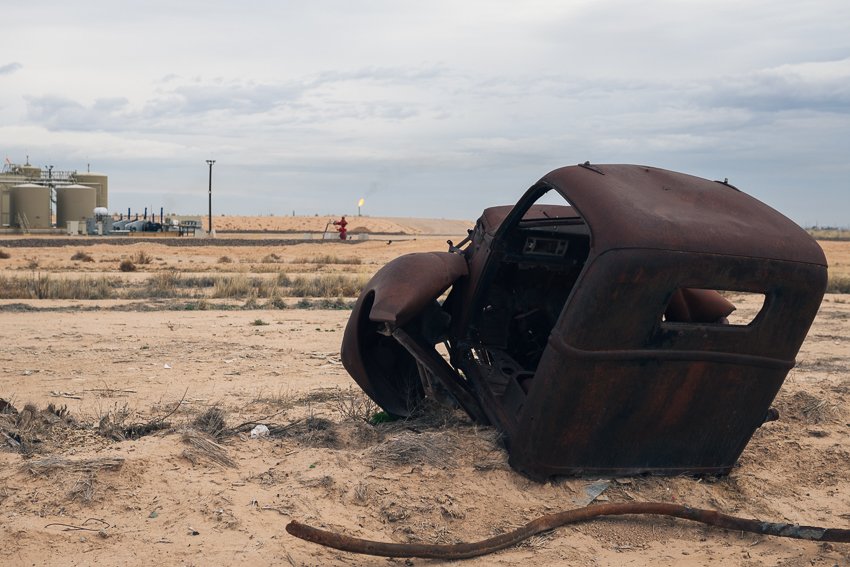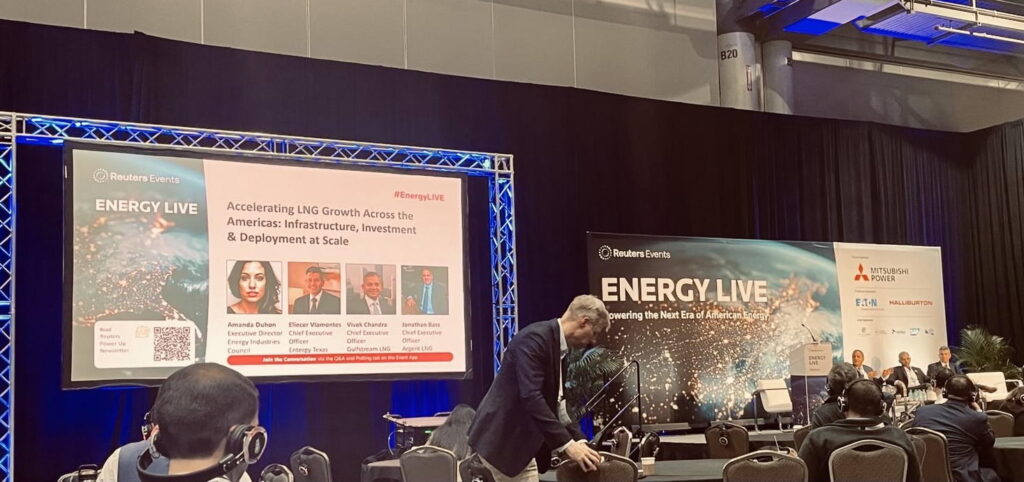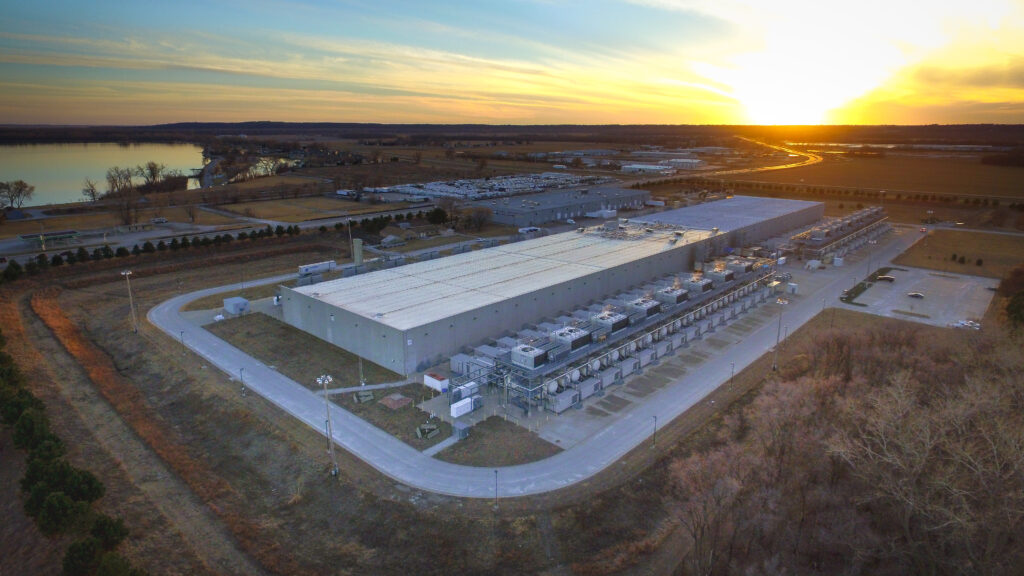Oil prices collapsed today amid falling energy demand and the global response to the novel coronavirus outbreak, as the number of confirmed COVID-19 cases worldwide reached over 113,000. On Friday, talks disintegrated inside the so-called OPEC+ alliance, which includes Organization of Petroleum Exporting Countries (OPEC) as well as non-OPEC members like Russia.
This breakdown kicked off a global oil price war that left Wall Street reeling on Monday, threatening the already troubled U.S. shale oil and gas industry and challenging the resilience of the Trump administration’s “energy dominance” theory that argues domestic shale oil production benefits national security and insulates the U.S. against the actions of other countries. Instead, relying on a shaky shale industry may have left the U.S. economy more vulnerable during times of crisis.
The price tag on a barrel of oil plunged over the weekend and continued its steep fall on Monday. Goldman Sachs Group warned that oil prices could fall as low as $20 a barrel. Meanwhile, the minimum price it would take for a new shale well to recoup its costs in Texas’ Permian basin is $48 a barrel, Goldman projects. In contrast, Saudi Arabia’s production costs are said to be $2.80 a barrel.
“With a combination of a massive supply overhang and a significant demand shock at the same time, the situation we are witnessing today seems to have no equal in oil market history,” Fatih Birol, head of the International Energy Agency (IEA), wrote in a thread on Twitter early Monday morning.
With a combination of a massive supply overhang and a significant demand shock at the same time, the situation we are witnessing today seems to have no equal in oil market history.#THREAD
— Fatih Birol (@IEABirol) March 9, 2020
Many energy analysts faulted Russia’s refusal to cut its oil production, reading the move as an effort to deal a death blow to America’s shale industry, which has racked up extraordinary levels of debt over the past decade.
The sell-off on Wall Street was so severe Monday morning that the New York Stock Exchange triggered its so-called “circuit breaker” rules, which paused trading for 15 minutes after the S&P 500 fell seven percent just four minutes after markets opened.
Harold Hamm, executive chairman of fracking firm Continental Resources, and Jeffrey Hildebrand, co-founder of Hilcorp Energy Co., both fell off Bloomberg’s index of the world’s top 500 billionaires. Hamm reportedly lost $2 billion on Monday.
Another shale industry leader, Pioneer’s Scott Sheffield predicted major layoffs in shale oilfields, telling the Washington Post, “there will be many bankruptcies in our industries and tens of thousands of layoffs over the next 12 months.”
Others warned that the combination of an oil price collapse and COVID-19 could push the entire U.S. economy into recession.
“While lower oil prices will help offset some of the impact created by COVID-19, the U.S. is now a net exporter of petroleum on a volume basis and one of the world’s largest producers,” Business Insider reported today. “This means that thousands of more workers depend on the industry, whether directly or indirectly, so the negative effects of an oil price drop are nearly equal to the boost from cheaper gas at the pump.”
‘Energy Dominance’ Claims in Shambles
The Trump administration has staked its approach to energy on promoting domestic oil and gas drilling and fracking — in part because of a claim that more domestic oil production would insulate the U.S. economy.
“We believe the United States should never again be at the mercy of a foreign supplier of energy,” President Donald Trump said at the Shale Insight conference in Pittsburgh last October. “We are committed not only to energy independence but to American energy dominance. And the path to that future starts right here in shale country, with all of you.”
That’s a theme that Trump has repeatedly hammered throughout his time in office — the notion that by promoting fossil fuel production and in particular fracked shale energy, America can be protected against the influence of global energy markets and actions by other countries. “With the tremendous progress we have made over the past three years, America is now energy independent,” Trump said during his state of the union address last month, “and energy jobs, like so many other elements of our country, are at a record high.”
“An energy dominant America means self-reliant,” then-Energy Secretary Rick Perry told reporters in 2017. “It means a secure nation, free from the geopolitical turmoil of other nations who seek to use energy as an economic weapon.”
But because the shale drilling industry’s financial foundation has always been shaky, other nations might rightly perceive shale drillers as vulnerable to abrupt low price swings.
By promoting the expansion of the shale drilling industry, which is largely made up of firms that have not yet shown they can generate profits from selling shale oil and gas, the Trump administration may have left the country’s economy far more exposed to the actions of nations abroad — as today’s oil market rout shows.
“At a time when U.S. shale players face recurring negative free cash flow generation, high accumulated leverage, tighter capital access, stalling productivity, and accelerated decline rates which are all forcing shale companies to scale back their expansion plans, a price war may thus push these producers already at risk of bankruptcy over the edge,” Japan’s MUFG bank said in a note.
That motivation was certainly the prevailing narrative among oil analysts over the weekend. “The Kremlin has decided to sacrifice OPEC+ to stop U.S. shale producers and punish the U.S. for messing with Nord Stream 2,” Russian economist Alexander Dynkin, president of the Institute of World Economy and International Relations, told the Los Angeles Times.
Shale debts have left lenders far more exposed to a crisis in the oil markets than they would have been if drilling companies had remained within their budgets. “Banks wrote off as much as $1 billion in 2019 in reserve-based shale loans, more than they have in 30 years of making them, according to Mike Lister, an energy banker at JPMorgan Chase & Co,” World Oil reported last week. An additional $40 billion of shale debts are expected to come due in 2020, followed by over $160 billion in debts over the following three years.
A friend just told me there is $600 billion in energy BBB rated debt. And $2 trillion in BBB minus. Might energy debt be the catalyst for a crisis after all?
— Bethany McLean (@bethanymac12) March 9, 2020
Uncertainty about the potential for the shale industry’s economic woes to more broadly infect the surrounding economy was apparent in investment circles today.
Not only can oil price cuts harm the shale drilling industry, in other words, but they can also cast a larger shadow over the broader U.S. economy than would have been possible if domestic drilling weren’t built on vast amounts of debt.
And that means that major low-cost oil producers like Russia and Saudi Arabia have far more leverage over the U.S. economy and the Trump administration than they might have if, for example, the U.S. had thrown significant support behind investment in domestic renewable energy.
“This will only deliver a gut punch to a patient who was already quite sick,” Bob McNally, president of Rapidan Energy Group, told Bloomberg this morning. “This threatens to rip away the energy independence.”
Despite today’s price rout, the prospects for many shale drilling companies remain unclear, as the U.S. shale industry has continued to pump out higher volumes of fossil fuels over the past decade.
“We have seen that some actors came up with the motto of killing the shale industry in North America,” IEA’s Birol added in a webinar Monday morning, according to S&P Global Platts. “We will see whether or not shale will be killed … which I don’t think so,” he added.
In fact, it’s shale’s very indebtedness that might make it more difficult for beleaguered drillers to cut production in a low-price environment. The need to make debt payments has been one of the factors analysts cite in explaining why shale volumes have continued to rise even as profits have often failed to materialize.
There’s also an increased risk that drillers under financial pressure may cut corners on environmental compliance costs and worker safety measures — steps that not only put workers and the public at greater risk, but that also expose companies to more liability over the long run.
An antique truck rusting away in the oil patch in Reeves County, Texas. Credit: Justin Hamel © 2020
Protecting Against Volatility by Moving Away from Fossil Fuels
That blend of pressures and uncertainty also raises the risks of even more volatility in the broader energy market going forward. Natural gas prices “whipsawed” today, amid uncertainty about what effects the oil price war might have on natural gas markets. Renewable energy stocks also suffered — even as the global oil market offered an object lesson in one of the ways that the renewable energy industry’s past decade has differed sharply from U.S. shale’s.
While shale has seen price swings and volatility, the cost of renewable energy projects have consistently moved in one direction — lower — making wind and solar far more competitive in the power markets compared to fossil fuels.
“Renewable energy growth also plays a direct role in mitigating and diminishing the negative impact of uncertain global fossil fuel prices and exchange-rate risks,” an European Commission report concluded last year.
Oil markets today don’t only face a nearly unprecedented situation because of an over-supplied market and a collapsing price. They also face — for the first time — real competition from non-fossil fuel sources of energy.
And in that environment, calls to divest from fossil fuels have found a growing audience among those with money on the line.
“We raised the question of people wanting to buy electric vehicles,’ Rakhi Kumar, an accountant with State Street Global Advisors, which manages $3 trillion in funds, told WBUR today, “and one of the oil companies told me that, ‘Oh, you know, that’s only 20 percent to 30 percent of our demand, coming from cars.’ I just looked at them, and I said, ‘Well, if any other sector had told me that 20 percent to 30 percent of the demand was at risk, it would be of concern.’”
Main image: Then-candidate Donald Trump spoke at a shale industry conference in Pittsburgh in 2016. Credit: Laura Evangelisto © 2016Subscribe to our newsletter
Stay up to date with DeSmog news and alerts







